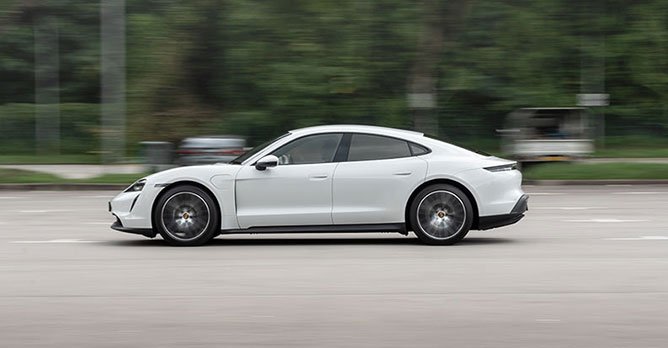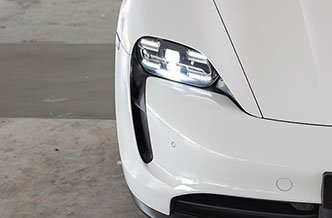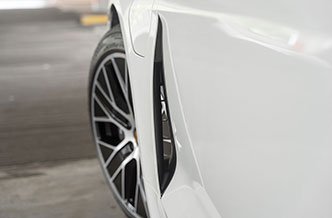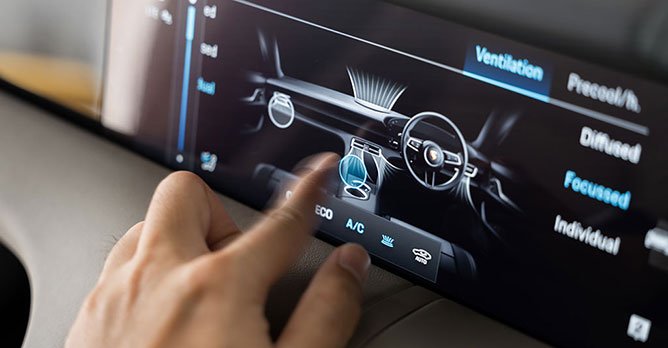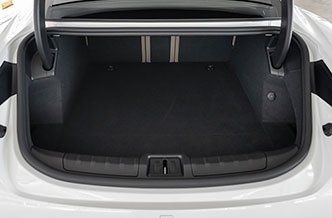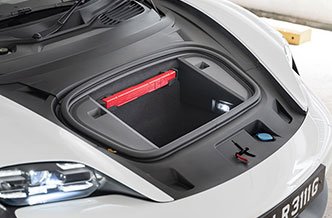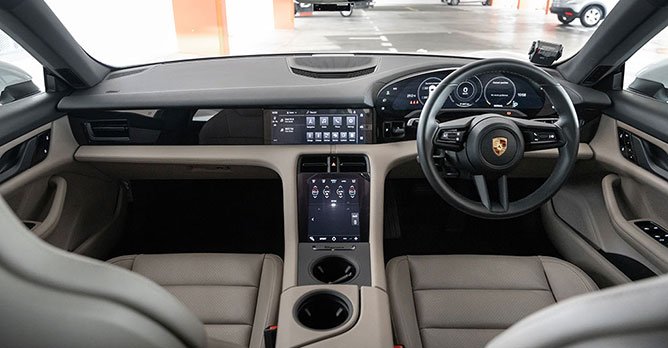Porsche Taycan Electric Performance Battery 79 kWh (A) Review
11 Mar 2022|11,692 views
What We Like
It's a Porsche!
Green credentials with sports car disposition
Looks good, in and out
Very intuitive infotainment system
Precise steering with excellent body control
Achieved 4.9km/kWh, which was better than the stated 3.6km/kWh
What We Dislike
Electric Sport Sound isn't for everyone
It's not exactly affordable for the mass
Regenerative braking is weak
Why would anyone be interested in an entry-level car? Truth be told, the exact question that was posed to me, and I quote, was why would anyone be interested in an entry-level anything? And my answer was a simple, "Why not?".
Why wouldn't anyone be interested in an entry-level car? Because these cars are slower? Because they are not as well-equipped? Or is it because they don't give you the boasting rights you think you deserve during your outing with the boys?
It's the drive, not the speed
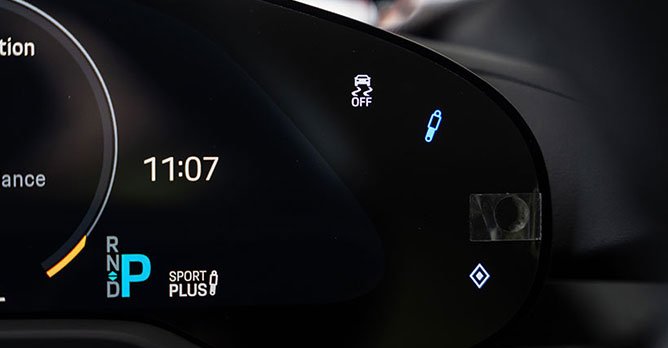
This has a lot to do with the fact that the 4S comes with two electric motors - one at the front and the other at the rear - while the base variant that you see only comes equipped with one that's located at the rear. As a result, 322bhp and 345Nm of torque is sent only to the rear wheels instead of all four corners. Needless to say, our test car is significantly down on output - at 322bhp and 345Nm of twisting force, as opposed to a manic 523bhp and 640Nm of torque on the 4S.
But where the entry-level Taycan falls short on power, it more than makes up for it with its light-footedness (the car weighs 90kg lesser since it has ditched the front motor), agility and ample straight-line punch that will easily keep up in almost every real-world situation.
And because acceleration is instantaneous, you're tackling short and sharp turns as well as long and winding bends a lot quicker than usual - all the time with your eyes fixated on the road ahead, hands directing the precise and beautifully-weighted steering and right foot controlling every ounce of pressure to ensure you don't over push the car's (or your) boundaries.
Couple all of these with a low centre of gravity and what you get is a true blue sports sedan rather than just a hyped up fast car that has maximum grip, minimum roll and an incredibly planted stance that's astonishingly confident to pilot.
And should you need hard sudden braking, the well-modulated brakes will assure you of its speed-shedding capabilities. Here, unlike most electric vehicles, there's no one-pedal driving option due to the weak regenerative braking, but that's a small trade-off for a more intuitive and communicative experience on the road, methinks.
It's the quality, not the quantity
I also do think that it's quite hard to see what this Taycan loses in terms of equipment when compared to the 4S or other peers like the Tesla Model 3 Standard. You still get a well-sculpted slippery body, a cockpit that's both driver-centric and tech-savvy and an overall luxurious cabin that boasts top-notch fit and finish that should make your buddies go ooh and aah.
You get three crisp and clear digital touchscreens on board with haptic feedback that show you everything you need to meddle with on a daily basis. You even get touch-sensitive buttons for the head lights, traction control and chassis settings at the edges of the curved instrument panel, which sit conveniently close to your hands from where you're seated.
Even then, there's a quibble I have with having everything placed in the digital screen in the Taycan and that's the air-con vent controls. Instead of having vents that can be meticulously adjusted manually, the only way to move them is through an air-con menu on the centre console that allows you to digitally control the directional flow of the air.
Apart from that, everything else is a decidedly well thought out piece of engineering machine. Even having the gear controls on the left of your steering on the dash doesn't seem any less intuitive as, say, having them on the signal stalk like how Merc and Tesla do it.
Form and function meeting in harmony
Still, in terms of space, the Porsche Taycan doesn't seem as airy and spacious as the Tesla. I wouldn't care to have three passengers at the back, since it's best left for two. And with the sloping roofline of the Taycan, taller Asian passengers may be fighting for headroom.
What they will not be fighting for is space in the trunk and frunk. Boot space stands at 366 litres while the frunk offers some 81 litres. These, while may seem small on paper, are actually quite sufficient for your weekly grocery, picnic as well as the occasional runs to the airport.
Getting on board with the future
Yes, it may seem like a very bias report here with the Porsche Taycan, more so that when this is an entry-level variant that comes with significantly lesser bells and whistles.
Nonetheless, with this car, it sort of proves that sometimes less can be more and it isn't so much about how much more power you can get with so much less money. Rather, it's about the drive and the quality and the longevity and the functionality that come with the car that make every journey such a wholeheartedly enjoyable experience.
I mean, why wouldn't anyone be interested in an entry-level car?
In the market for a four-door electric sports sedan? Here are some other options for you to consider:
The base Tesla Model 3 makes sense if you can live with one-pedal driving
Polestar 2 is an attractive EV proposition that makes a lasting impression
Want to see how fast this Porsche Taycan can go? Join us in this video review!
What We Like
It's a Porsche!
Green credentials with sports car disposition
Looks good, in and out
Very intuitive infotainment system
Precise steering with excellent body control
Achieved 4.9km/kWh, which was better than the stated 3.6km/kWh
What We Dislike
Electric Sport Sound isn't for everyone
It's not exactly affordable for the mass
Regenerative braking is weak
Why would anyone be interested in an entry-level car? Truth be told, the exact question that was posed to me, and I quote, was why would anyone be interested in an entry-level anything? And my answer was a simple, "Why not?".
Why wouldn't anyone be interested in an entry-level car? Because these cars are slower? Because they are not as well-equipped? Or is it because they don't give you the boasting rights you think you deserve during your outing with the boys?
It's the drive, not the speed

This has a lot to do with the fact that the 4S comes with two electric motors - one at the front and the other at the rear - while the base variant that you see only comes equipped with one that's located at the rear. As a result, 322bhp and 345Nm of torque is sent only to the rear wheels instead of all four corners. Needless to say, our test car is significantly down on output - at 322bhp and 345Nm of twisting force, as opposed to a manic 523bhp and 640Nm of torque on the 4S.
But where the entry-level Taycan falls short on power, it more than makes up for it with its light-footedness (the car weighs 90kg lesser since it has ditched the front motor), agility and ample straight-line punch that will easily keep up in almost every real-world situation.
And because acceleration is instantaneous, you're tackling short and sharp turns as well as long and winding bends a lot quicker than usual - all the time with your eyes fixated on the road ahead, hands directing the precise and beautifully-weighted steering and right foot controlling every ounce of pressure to ensure you don't over push the car's (or your) boundaries.
Couple all of these with a low centre of gravity and what you get is a true blue sports sedan rather than just a hyped up fast car that has maximum grip, minimum roll and an incredibly planted stance that's astonishingly confident to pilot.
And should you need hard sudden braking, the well-modulated brakes will assure you of its speed-shedding capabilities. Here, unlike most electric vehicles, there's no one-pedal driving option due to the weak regenerative braking, but that's a small trade-off for a more intuitive and communicative experience on the road, methinks.
It's the quality, not the quantity
I also do think that it's quite hard to see what this Taycan loses in terms of equipment when compared to the 4S or other peers like the Tesla Model 3 Standard. You still get a well-sculpted slippery body, a cockpit that's both driver-centric and tech-savvy and an overall luxurious cabin that boasts top-notch fit and finish that should make your buddies go ooh and aah.
You get three crisp and clear digital touchscreens on board with haptic feedback that show you everything you need to meddle with on a daily basis. You even get touch-sensitive buttons for the head lights, traction control and chassis settings at the edges of the curved instrument panel, which sit conveniently close to your hands from where you're seated.
Even then, there's a quibble I have with having everything placed in the digital screen in the Taycan and that's the air-con vent controls. Instead of having vents that can be meticulously adjusted manually, the only way to move them is through an air-con menu on the centre console that allows you to digitally control the directional flow of the air.
Apart from that, everything else is a decidedly well thought out piece of engineering machine. Even having the gear controls on the left of your steering on the dash doesn't seem any less intuitive as, say, having them on the signal stalk like how Merc and Tesla do it.
Form and function meeting in harmony
Still, in terms of space, the Porsche Taycan doesn't seem as airy and spacious as the Tesla. I wouldn't care to have three passengers at the back, since it's best left for two. And with the sloping roofline of the Taycan, taller Asian passengers may be fighting for headroom.
What they will not be fighting for is space in the trunk and frunk. Boot space stands at 366 litres while the frunk offers some 81 litres. These, while may seem small on paper, are actually quite sufficient for your weekly grocery, picnic as well as the occasional runs to the airport.
Getting on board with the future
Yes, it may seem like a very bias report here with the Porsche Taycan, more so that when this is an entry-level variant that comes with significantly lesser bells and whistles.
Nonetheless, with this car, it sort of proves that sometimes less can be more and it isn't so much about how much more power you can get with so much less money. Rather, it's about the drive and the quality and the longevity and the functionality that come with the car that make every journey such a wholeheartedly enjoyable experience.
I mean, why wouldn't anyone be interested in an entry-level car?
In the market for a four-door electric sports sedan? Here are some other options for you to consider:
The base Tesla Model 3 makes sense if you can live with one-pedal driving
Polestar 2 is an attractive EV proposition that makes a lasting impression
Want to see how fast this Porsche Taycan can go? Join us in this video review!
Car Information
Porsche Taycan Electric
CAT B|Electric|4km/kWh
Horsepower
240kW (322 bhp)
Torque
345 Nm
Acceleration
5.4sec (0-100km /hr)
Thank You For Your Subscription.
















































